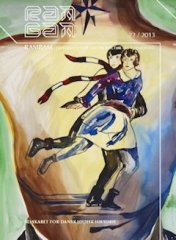Yiddishland in Kopenheygen
Resumé
Yiddishland in Kopenheygen
Will Eisner’s influence on the comic media has been enormous in the USA and Europe alike. In Denmark, most of Eisner’s late productions were published by the fan-based Bogfabrikken. In the 1930s, Eisner had been one of the creators of the superhero genre and became formative with his i publications. The Spirit was a humorous comic-noir, featuring a masked vigilante anti-hero, low life criminals as well a grotesque villain gallery, and numerous femme fatales. The Spirit became a sensation, especially because of the artwork and the contemporary urban settings. Eisner’s artistic skills and urge to push the perceived limits of the media made him an artist’s artist.
During the Second World War, Eisner began drawing instructional material for the US army, and left the regular comic industry in the beginning of the 1950s, in part because of the industry’s selfimposed censorship, the Comics Code Authority (CCA). In the 1970s, however, Eisner re-entered the comic scene. His new material featured mature and complex narratives, dealt with religious and social matters, and described non-CCA matters such as explicit sexuality, anti-Semitism and successful criminal behaviour. Eisner launched the expression graphic novel to describe his new style, and among his crucial works are titles such as A Contract with God and Other Tenement Stories, A Life Force, To the Heart of the Storm, and The Plot.
In the 1970s, Eisner became a huge fan-favourite in Denmark. In close dialogue with the Danish editors, the majority of Eisner’s production was published in a remarkably high standard. Eisner’s works were displayed at Danish art galleries, and he taught about his techniques and theories in workshops. In 1996, the city of Copenhagen asked Eisner to create a mural based on his production.
Eisner chose Gerhard Shnobble from one of his classic The Spirit stories, and the completed work Den flyvende mand (The Flying Man) is still to be seen in the quarter of Christianshavn.





